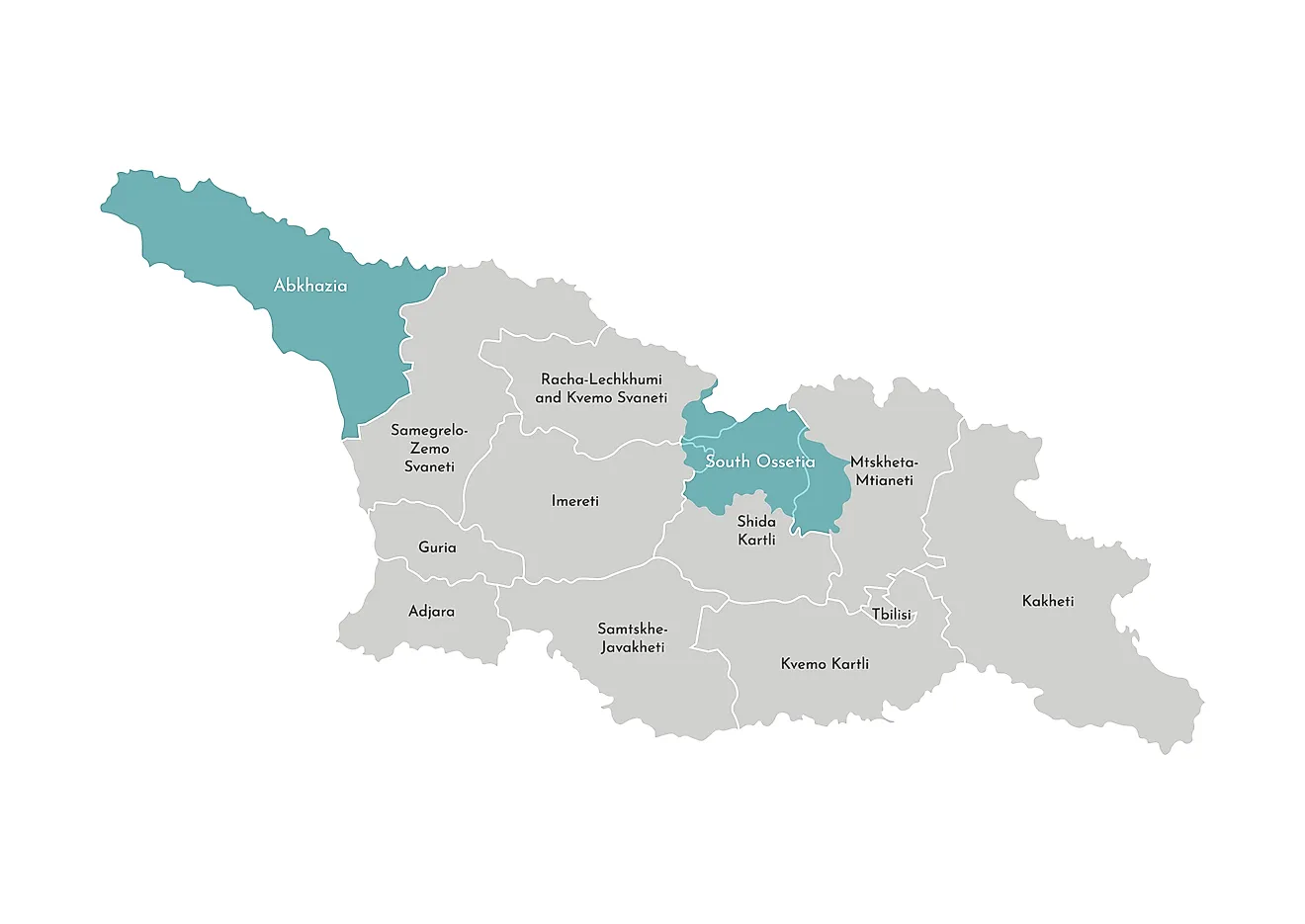Is South Ossetia a Country?

South Ossetia is a partially recognized state located in an area which was formerly the Georgian Soviet Socialist Republic. Situated in the South Caucasus, the state has an area of 3,900 km2 and the majority of its land sits more than 1,000 meters above sea level. Known officially as the Republic of South Ossetia, the state has an estimated population of 53,000 and its capital city is Tskhinvali. South Ossetia declared independence from Georgia in 1991, although Georgia does not acknowledge this claim.
History of the Ossetians
The Ossetians originated from a tribe known as Alans, which was a Sarmatian Iranian tribe in the Northern Caucasus. They later migrated to Georgia in the 17th century. The Russian Empire expanded into the region in the 18th century. Most inhabitants of South Ossetia are Ossetians, a Caucasian people who speak the Ossetic language. Besides Ossetians, Georgians make up most of the remaining population. Christianity is the dominant religion, although there are smaller numbers of Muslim and neopagan followers. During the conflicts in 1991, more than 100,000 people were displaced and 1,000 died. According to Georgian officials, many ethnic Ossetians relocated to North Ossetia because of the war, and about 14,000 Georgians fled to other parts of Georgia.
The majority of Ossetians are subsistence farmers. In fact, about one-tenth of South Ossetian land is under cultivation. Crops grown include grains, fruits, and vines. Since the war in the 1990s, the region has struggled economically, and employment and supplies are scarce. At one point the country had to outsource electricity from North Ossetia because Georgia cut off its supply. Reports published in 2002 indicate that South Ossetia’s GDP was approximately US$15 million. The country is solely depended on Russia for economic assistance.
Studies show that before the war in 2008, there were 22 small factories in South Ossetia, which had a total production of 61.6 million rubles. However, by 2007 only seven out of them were reported to be working. Further reports in 2009 indicated that a large portion of the production plants was either idle or in need of repairs.
Independence
Conflicts between the Ossetians and the Georgian government began in 1918, shortly after the Russian Revolution. War broke out after three Georgian princes were killed by Ossetians. In the early 1920s, the Ossetians collaborated with Bolshevik forces to create the North Ossetia Autonomous Oblast and South Ossetian Autonomous Oblast in Georgia. Then in the 1980s, the Ossetians formed a separatist movement to seek succession from Georgia. The movement also sought unification with North Ossetia. However, nationalism rose, and the Soviet Union sent troops to maintain the peace. In 1990, the Ossetians demanded an autonomous republic and declared South Ossetia a democratic republic. The Georgian government denied this declaration and war broke out in 1991.
The South Ossetia region later gained its independence from the Georgian Soviet Socialist Republic. Independence came during the 1991-1992 war when Georgia accepted a ceasefire. After the 2008 war, Russia, Venezuela, and Nauru recognized the independence of South Ossetia. However, Georgia does not acknowledge the independence of South Ossetia. As a result, South Ossetia does not correspond to any of the Georgian administrative areas. Georgia and some international organizations often refer to South Ossetia as a legally unidentified Tskhinvali region.











